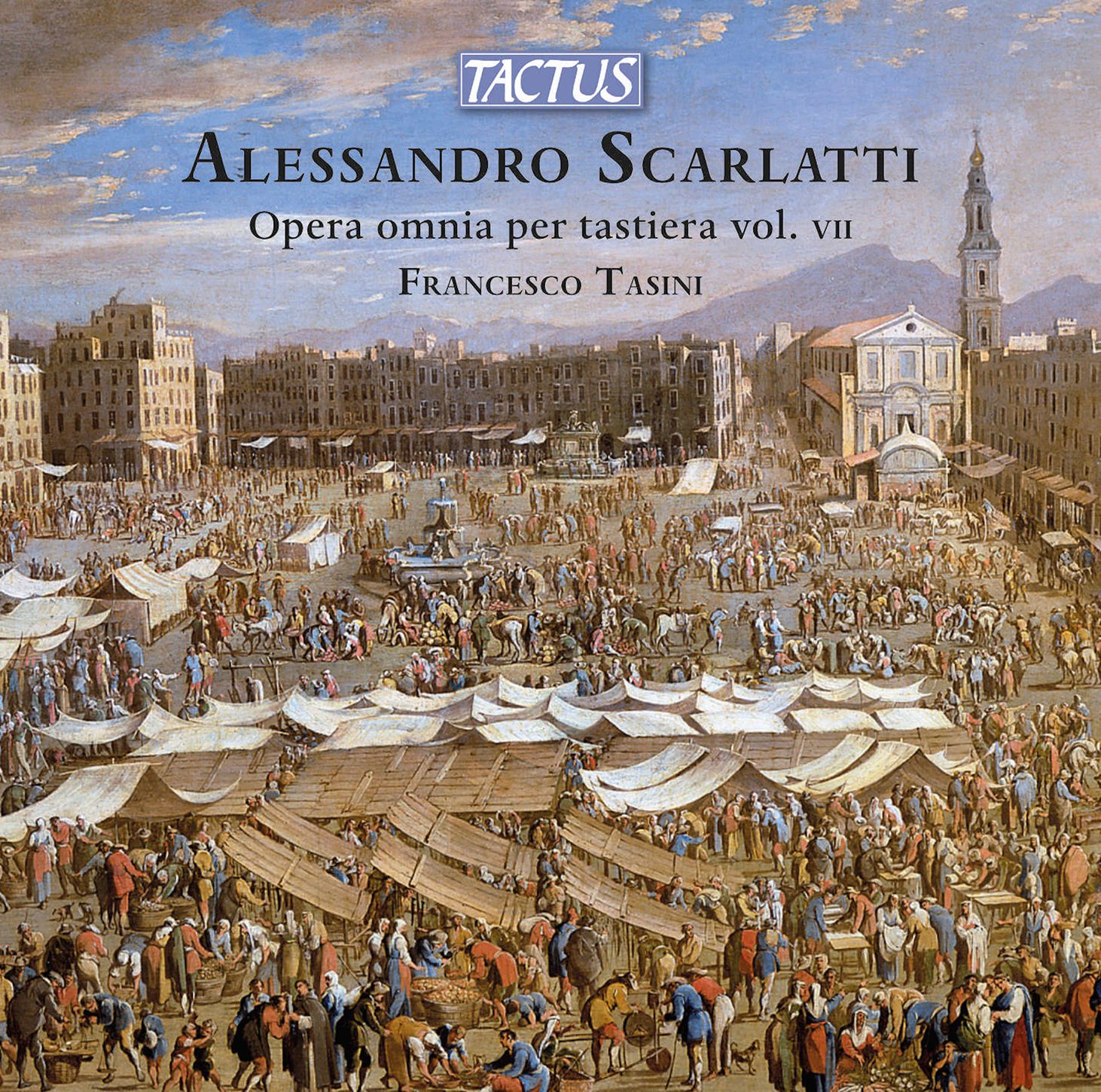Alessandro Scarlatti: the revelations of his keyboard works
A fine end to what is obviously a very significant series, not least for our appreciation of the music of Scarlatti père

While Domenico Scarlatti is universally famous - and famous specifically for his keyboard works (try this post if you need a reminder of his greatness), his father‘s music is dictinctly in need of advocacy; and where better to feature him than here on Classical Explorer? Alessandro has turned up on here before, as part of a disc entitled Setticento, where there‘s a video of one of his chamber music pieces; but here we have two full discs to enjoy and explore.
There’s nothing quite like coming in at the end of a series to make you want the preceding volumes,. This twofer is the seventh and final volime of Francisco Tasini’s ”Opera omnia per tastiera” (Complete Works for Keyboard). It is issued in conjunction with the printed edition by Tasini. We saw this methodocology before, when Tactus released a disc of keyboard works by Bernardo Pasquiini (Discovering Bernardo Pasquini) and our subsequent post on the printed edition.
The first disc presents fifteen fugues performed at the historic 1836 Carlo Serassi organ of the Santa Maria di Campagna basilica in Piacenza. The fugues offer a veritable manual of models for teaching contrapuntal techniques, while the second disc instead contains a selection of organ works, plus three toccatas for harpsichord in the typical Scarlattian stricture of several movements (the instrument used is an original eighteenth-century by an anonymous artist from Ferrara complete with a pedalboard).
The Quindici Fugi a due that constitutes the first disc come from a manuscript that was enriched by comments by Nicola Sala (1713-1801), know for his treatise Regole del cotrapunto pratico (Naples, 1794, which you can view on either the Library of Congress website or IMSLP).
There is something immersive about Tasini’s performances of the fugues that allows them to appear as one contrapuntal field, an expanse of techniques of counterpoint. They are composed in a “modern style,” tonal and sophisticated. Try the C-Minor (No. 13):
... and compare it with the first, in D-Minor, active and, despite its minore setting, active and full of life:
This is certainly not background music - rather, this is music that rewards careful attention. Tasini‘s performances are both beautiful and intellectual simultaneuosly, his chosen instrument perfectly judged to maximal clarity of voicing. It is clear much love has been lavished on this project (by “project” I mean recording and score). The Fugues themselves are mini-masterpieces, and the invitation to lose oneself in thsi contrapuntal Heaven thsi disc offers should be eagerly embraced,
Tasini’s edition works with Scarlatti’s two-part Fugues imaginatively, filling out where appropriate (Tasini’s accompanying notes to the collection are full and incredibly useful: proper Baroque scholarship at its best, with little or no pandering to the novice listener).
The second disc is an assortment of short pieces: interestingly, the second, an (Andante) in C-Major, shows affinity to Pasquini‘s writing:
While the first four pieces are all in C-Major, there is much variety. The Fuga in particular is delightful - shining, even! I particularly like Tasini’s way with the trill in the fugue subject, and in all its recurrences:
A single Tastatura (Arpeggio) separates that from a string of Toccatas. The first comes from the same source as the Tastatura, a manuscript in the British Library. This Toccata in A-Major is in three sections, the final one of which is a a “Partita alla Lombarda”. It was originally for cembalo and is heard here on the organ:
The balance of the disc is performed on an Italian harpsichord: an anonymous instrument from Ferrara, 18th century restored by Roberto Mattiazzo in 2001 using Luigi Malerbi’s 1794 temperament and with A at 340Hz. It is a lovely instrument with two manuals and eight pedals (it is illustrated inthe booklet): but don‘t take my word for it. Here‘s the final Toccata (in E-Minor), which Tasini recorded in its organ version on Volume V of this series, hence, presumably, its designantion here as Toccata “4a”. We‘ll hear it on this magnificent harpsichord:
A fine end to what is obviously a very significant series, not least for our appreciation of the music of Scarlatti père.
Alessandro Scarlatti, Vol VII